
 |
Eager Space | Videos | All Video Text | Support | Community | About |
|---|

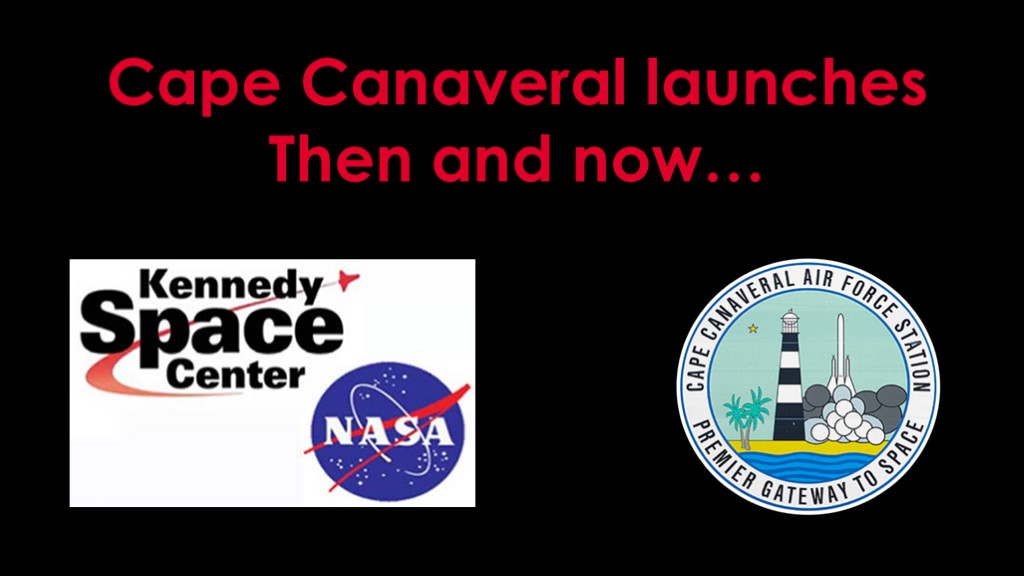
As sometimes happens, I found in the midst of working on a video that I needed to do a different video first, about what companies are currently operating at cape canaveral.
While writing that, I realized that talking about the current state of the cape didn't make a lot of sense without some information about the history of the cape.
To get started, there are two different entities that have launch facilities on the cape. There is Kennedy space center, and there is cape Canaveral space force station. They are different organizations but commercial payloads can launch from Space Force locations and military payloads can launch from Kennedy space center locations.
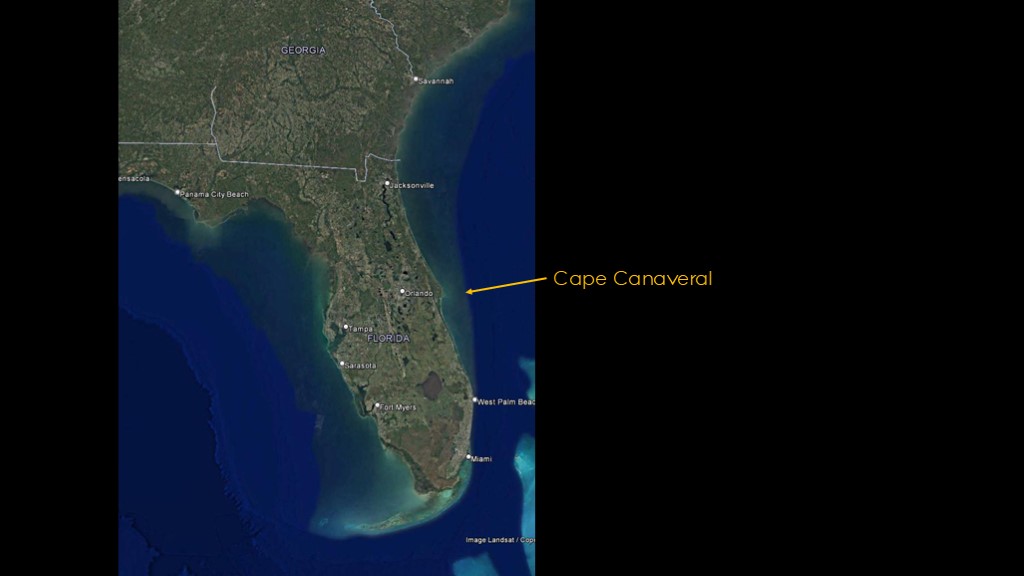
Let's start by clarifying where the cape is. It's on the east coast of Florida, pretty much due east from Orlando, best known for DisneyWorld.

Here's a closer view.
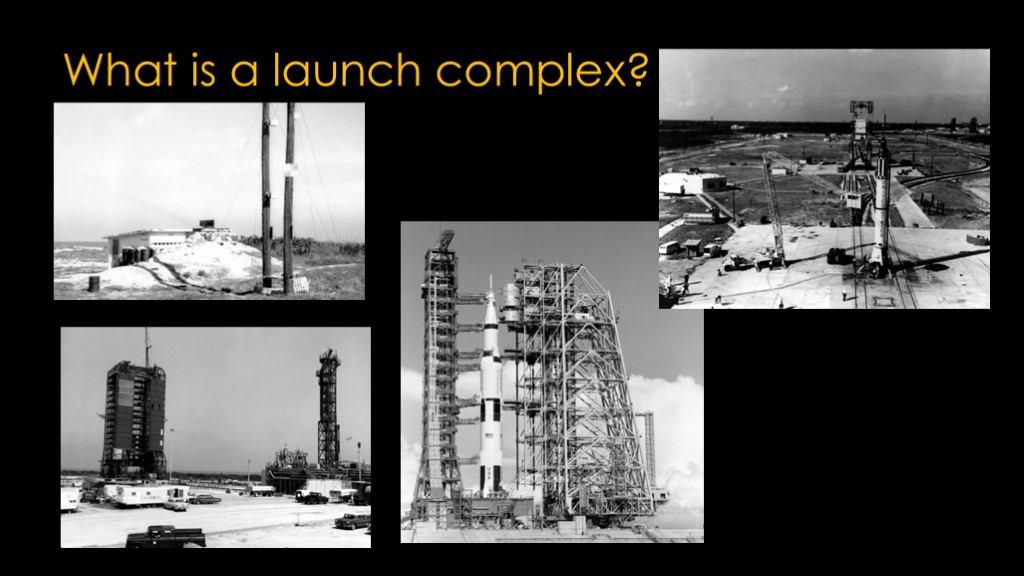
Before we start, we should probably define what a launch complex is.
We're used to big complexes like the Pad 39A complex used for Apollo or Pad 36A and B used for Atlas Centaur, but the term also applies to simple setups like this one used for Redstone or even this one used for Matador cruise missile launches.
While Canaveral is mostly a spaceport now, in the early days it launched a much more diverse set of vehicles.
Note that the launch pad is the physical support for the rocket while the launch complex includes the launch pad and all the support equipment for the pad. A rocket that launches from complex 16 also launches from pad 16, but a launch from complex 36 does not launch from pad 36, for reasons that will become clear.
Also note that in common usage this distinction is very often ignored.
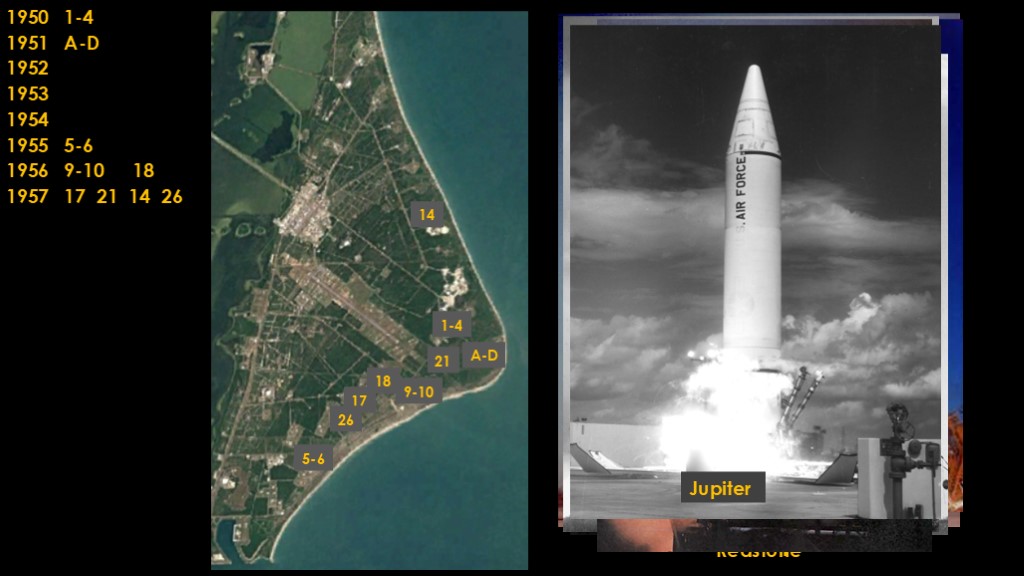
The launch complexes at the cape have a very strange numbering system, one that evolved over time. The following is a short journey through the history of the launch complexes, including the first vehicle that used each launch complex.
We start in 1950 with launch pads 1-4, launching the Bumper 8. It's a German V-2 rocket with a WAC Corporal second stage on top of it.
Moving onto 1951, we have the launch of matador, a surface-to-surface cruise missile with a nuclear payload. It was launched from launch complex A-D.
A few years go by, and in 1955 we see the first launch of a Redstone rocket from launch complex 5 and 6. Redstone was a short-ranged ballistic missile.
Things pick up in 1956, with the launch of the supersonic intercontinental cruise missile, the Navaho from launch complex 9 and 10.
And then vanguard, a scientific launcher, from launch complex 18.
Note that we're already getting a very random pattern of launch site locations and numbers. The air force laid out space as they saw fit. Also note that we're already seeing gaps; there was an allocated space for launch complex 7 and 8, but it was never utilized.
In 1957, things get busy. Thor is an intermediate range missile launched from LC 17. The XSM-73 bull goose is a cruise missile that was designed as a decoy - it was supposed to look like other US bombers on radar. It launched from LC 21.
Atlas - the first intercontinental ballistic missile for the US - is launched from pad 14. And to close out the year, Jupiter - a medium-ranged ballistic missile - launches from pad 26.
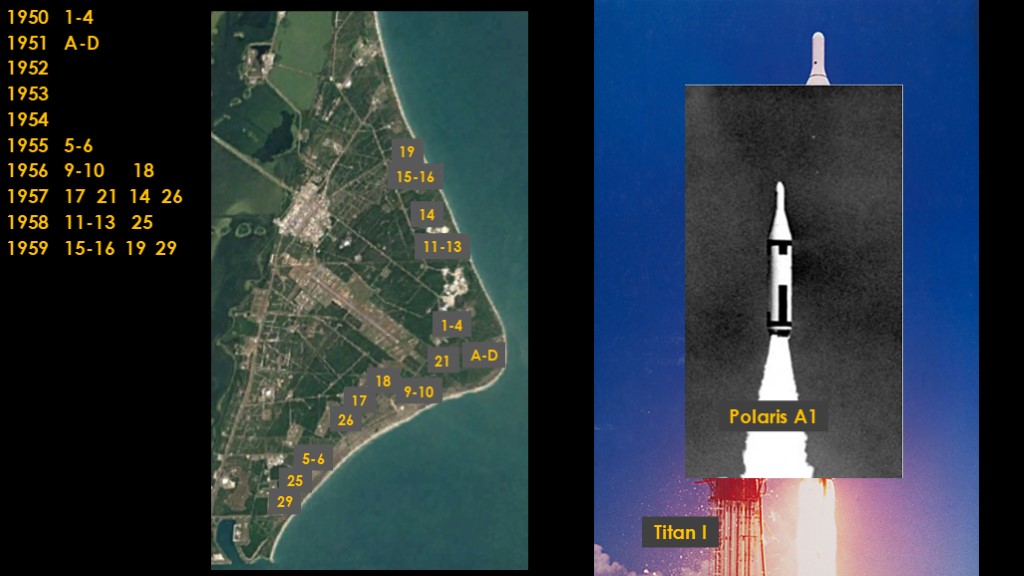
In 1958, atlas pads 11-13 go active, and we see a launch of Polaris from LC 25 at the south end of the cape. Polaris was the first submarine launched ballistic missile.
In 1959, LC 15, 16, and 19 go active for titan. Titan is another ballistic missile that was a backup in case the atlas was delayed.
There's also another pad for Polaris - LC 29 - It's not clear why they needed another pad, but they may have been duplicating the way the missile is launched from underwater.
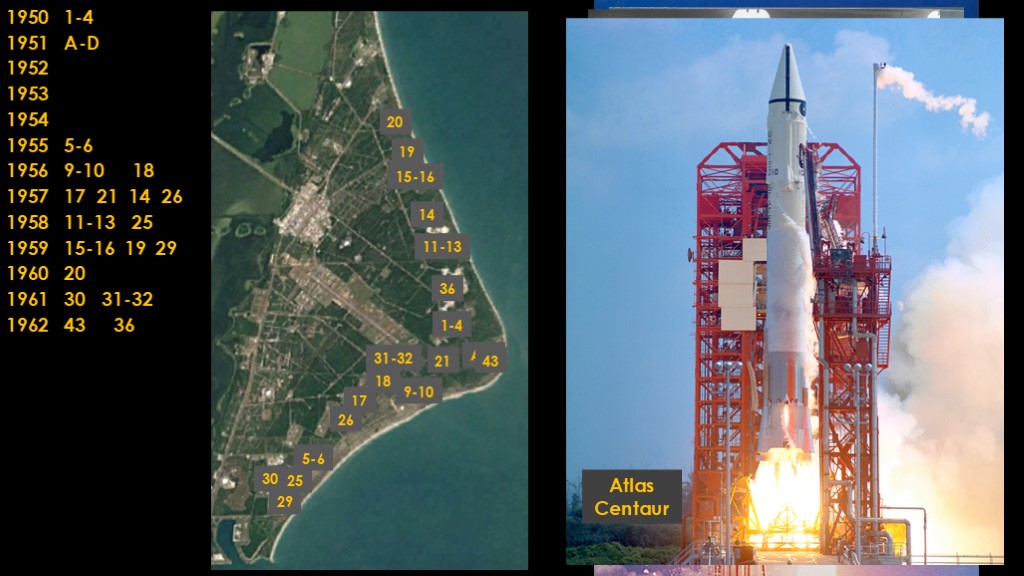
In 1960, things slow down a bit; the final titan pad in lc 20 at the north end comes online.
1961, two more missiles; the Pershing short range missile at LC 30 in the south and the minuteman ICBM at LC 31 and 32 in the middle.
In 1962 the very suborbital Loki research rocket showed up, to be launched from LC 43 near the tip of the cape. The Loki is smaller than many hobby rockets of today.
And the massive Atlas Centaur closed out the year at Launch complex 36, which - just to make things confusing - had two launch pads in one complex. The Centaur stage used with the current Atlas V and upcoming Vulcan rockets from ULA can be directly traced back to this centaur.
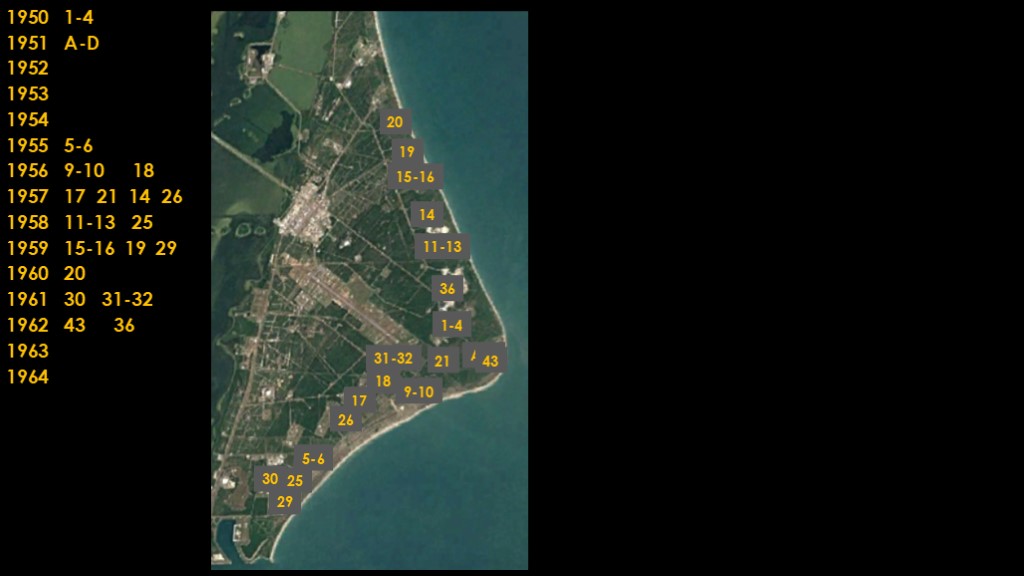

1963 and 64 pass by, and we're now we've moved beyond missiles, to the Titan IIIc and launch complex 41. This takes a titan II core and straps two huge solid rocket boosters on the side. The titan III was used as a heavy lifter for department of defense payloads and also for many NASA science missions.
And finally, LC 40 comes online in 1970, also set up to launch titan III rockets.
That takes us to the end of the initial wave of development at Cape Canaveral air force station.
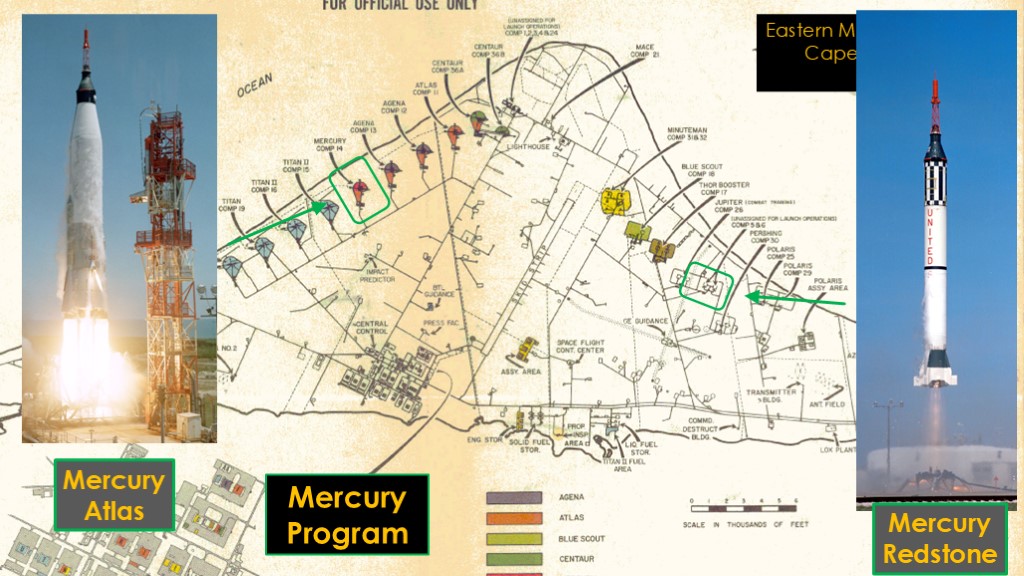
That covered all the air force programs, but of course NASA was getting busy as well in the early 1960s.
This map is from 1962; note that it has been rotated 90 degrees; north is to the left and the Atlantic ocean is at the top.
NASA was getting human spaceflight started with the Mercury program, and they needed rockets for those flights. The obvious rockets to use were the missiles already under development, so they used the launch complexes that were set up for those missiles.
The first three Mercury launches on the Mercury-Redstone rocket launched out of launch complex 5. The Redstone was a small rocket, not big enough to take Mercury into orbit.
The Mercury Orbital launches were on Mercury-Atlas, so they were launched from one of the Atlas sites, launch complex 14.
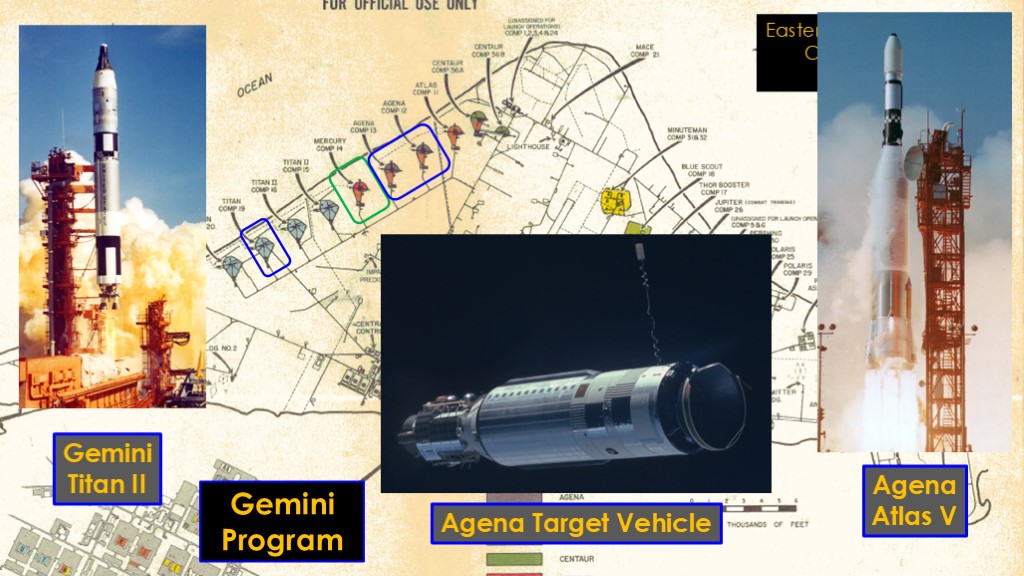
All of the Gemini launches flew on a Titan II Gemini launch vehicle out of launch complex 19.
In addition, the agena docking target vehicles were launched by Atlas rockets out of one of the Atlas Agena complexes.
The Gemini astronauts would practice the rendezvous and docking maneuvers that were needed for Apollo using the Agena vehicles.
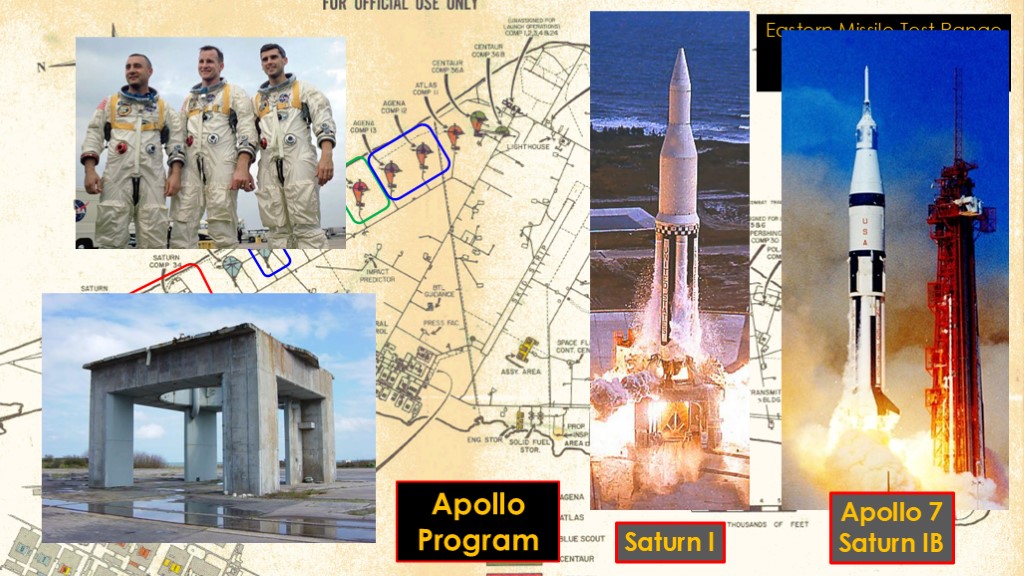
For Apollo, bigger rockets were needed.
At the northern end, complex 34 and 37 were build to support the Saturn I and IB rockets, including the launch of Apollo 7, the only crewed Apollo mission to be launched from Cape Canaveral Air Force Station.
Pad 34 was the site of the Apollo 1 fire that killed astronauts Grissom, White, and Chaffee. The launch platform has been preserved as a memorial to the astronauts.
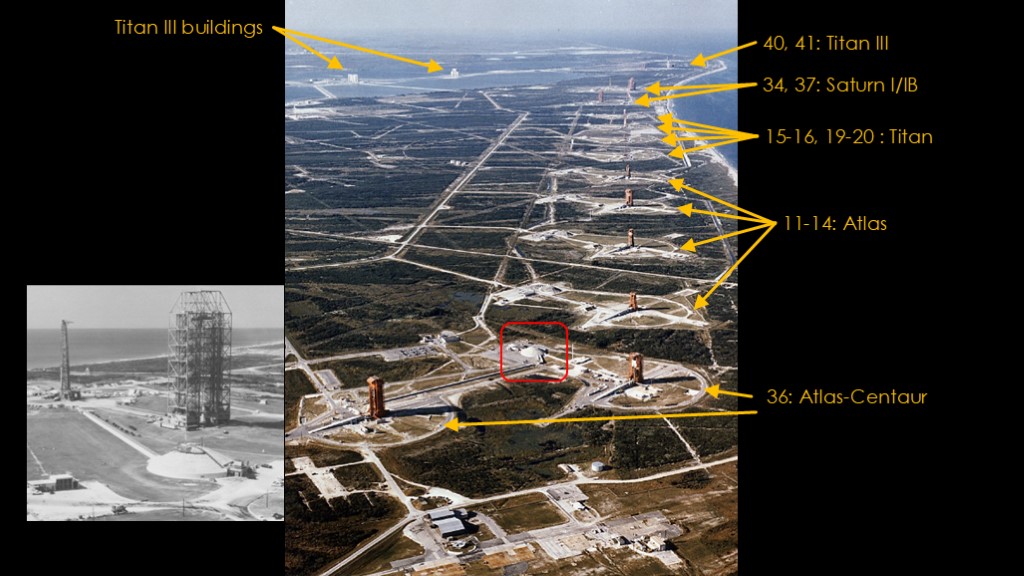
This picture shows a view looking north from 1964 or 1965
The row of launch pads was known as "ICBM row" or "missile row".
Starting at the south end, we have complex 36 with two pads for the atlas centaur.
Next are the four atlas pads, followed by the four titan pads.
The two Saturn I and IB pads are next.
And then just at the top, you can see pad 40 and 41 for Titan III, along with two assembly buildings. The titan III rockets would be assembled in these buildings and then rolled all the way to the launch pad on train tracks on either side of the access road.
In these pictures, you will often see these strange circular buildings; they are the blockhouses for the launch control centers.
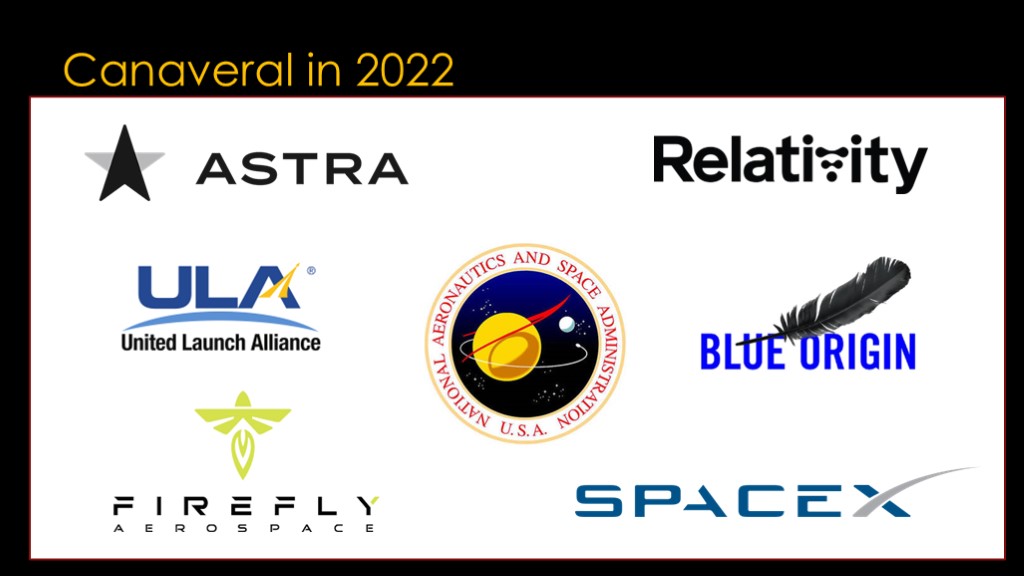
Now that we've done some history, let's move forward to 2022 and see what's going on now...
Here are the active organizations at Cape Canaveral and Kennedy Space Center.
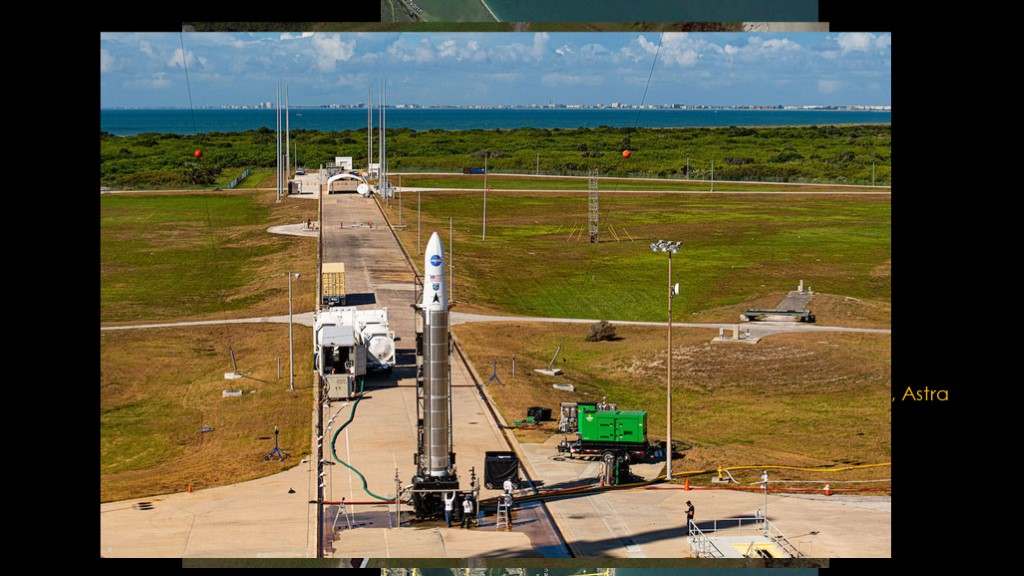
There are no active launch complexes south of the tip of the cape. I'm not sure why; it might be because the air force wishes to preserve those sites - their museum is nearby - and it might be because launches to high inclinations would overfly other launch sites.
We'll start at the south, right near the tip of the cape, where Astra leases space launch complex 46 for their Astra rocket.
Astra's goal is to be able to launch from unimproved sites, so their launch pad equipment is very minimal.
Here's a picture of one of their rockets at the launch site.
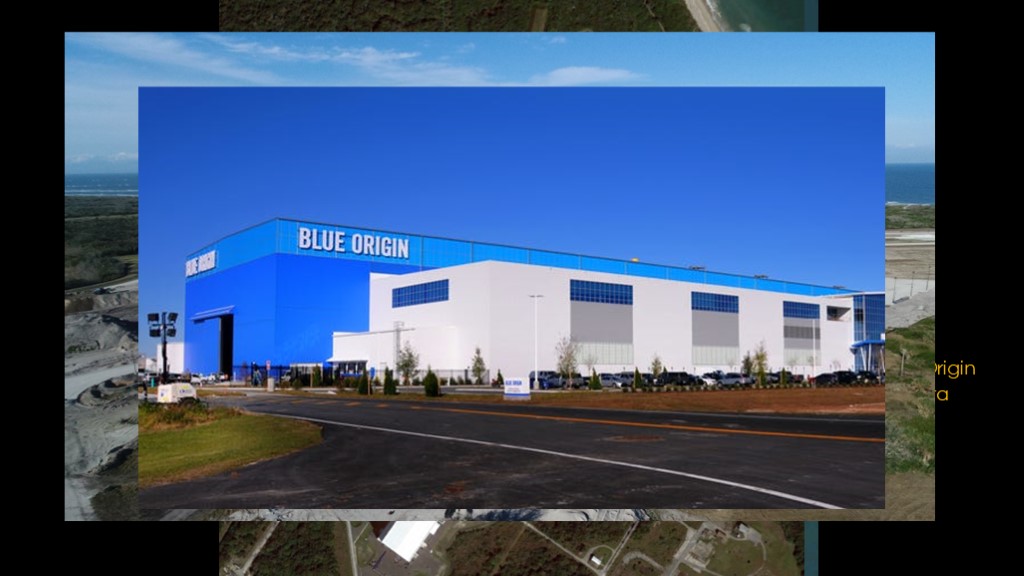
Moving north, there is Pad 36 which Blue Origin is modifying to support their New Glenn rocket. Here's what the pad looks like currently. Note that the blockhouse in the picture is the same one we saw in the missile row picture.
There is also the large New Glenn factory in Kennedy Space Center.
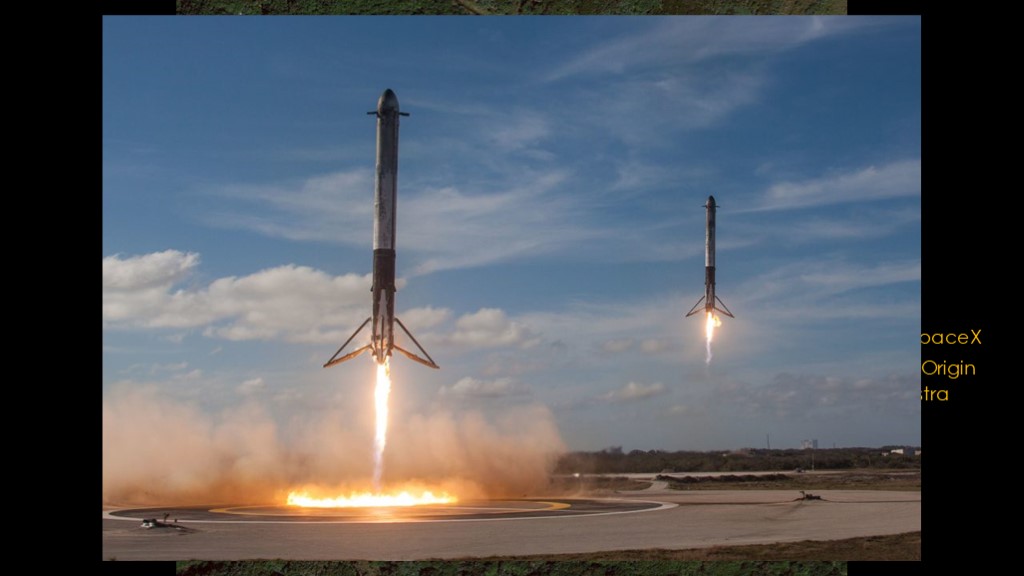
Next to the north, we have pad 13 which SpaceX has modified as landing sites 1 and 2 for Falcon 9.
You can see some remnants of the old pad structure, but mostly it's just two concrete landing pads.
The second image is of course a tandem booster landing from a falcon heavy launch.

Pad 16 will host Relativity's Terran 1 launcher.
Yep, it looks like a launch pad. The second picture is from the summer of 2021 showing the strongback that will be used to lift the rocket to a vertical position.

The last of the aspiring small launch companies takes us to pad 20, with the Alpha and beta rockets from Firefly.
Firefly is also planning a factory just across the street from Blue Origin, on New Space Drive (no, I'm not making that up).
Here's the pad, and a rocket sitting on the pad.
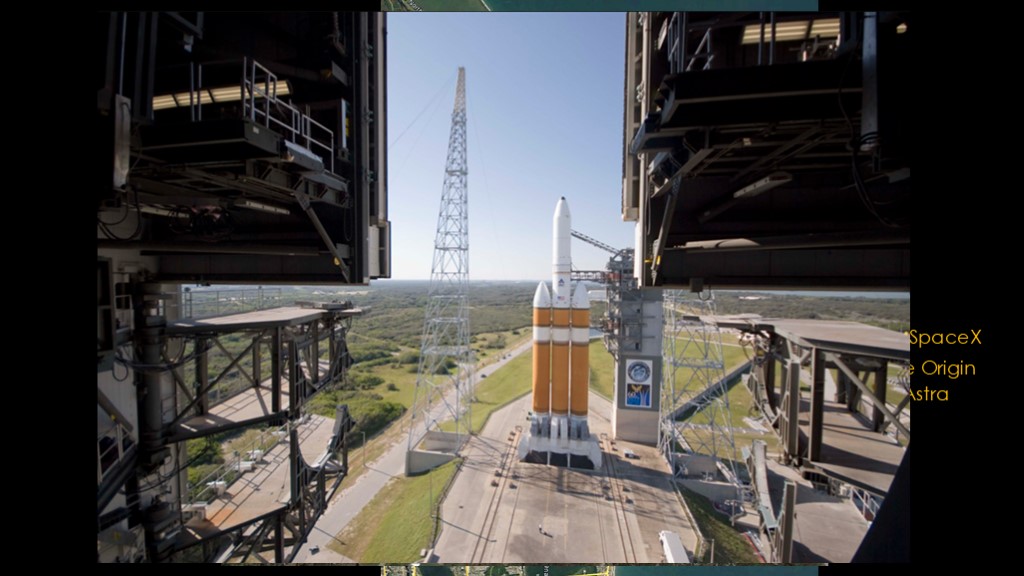
The south part of the coast is mostly used for smaller rockets, with New Glenn an obvious exception. We are now moving to bigger rockets as we move north.
Next up the coast is pad 37B, the long-time home for Delta IV rockets, currently launching the last few Delta IV heavy rockets for United Launch Alliance.
In this picture we can see the white assembly building which encloses the rocket.
Delta uses an interesting approach; instead of rolling the rocket out to the launch pad, they assemble the rocket over the launch pad and then roll the assembly building away, as we can see from this shot.
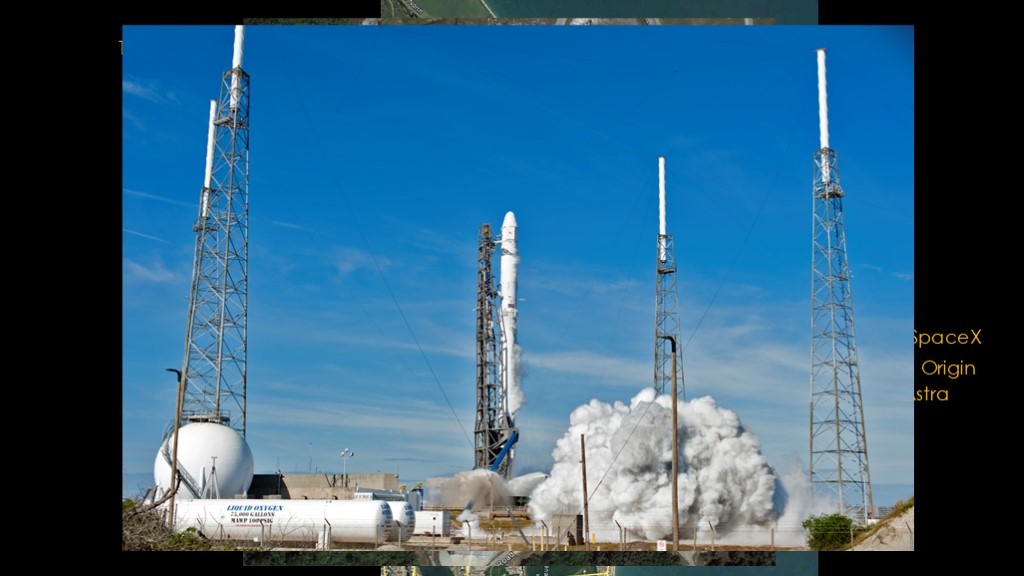
North to space launch complex 40, the first Florida home for SpaceX's Falcon 9 rocket. The space industry loves both creating acronyms and pronouncing them, so space launch complex is abbreviated SLC and pronounced as "slick" If you hear a mention of "slick 40" in a spacex broadcast, that's what it means.
This site was originally used to launch Titan III and IV rockets, and was leased by SpaceX in 2007. The majority of Falcon 9 flights have flown from this site. At the bottom is the integration building where the rocket and payload are assembled, and it is then rolled out to the launch site and lifted vertical by the transporter-erector.
This view shows the characteristic lightning towers to protect the launch vehicle from Florida thunderstorms.

Pad 41 is currently used by United Launch Alliance for their Atlas V rocket, and will also be used for their upcoming Vulcan rocket.
Another old titan site, it looks very similar to the Falcon 9 launch site. ULA assembles the rocket in the integration building at the bottom of the picture and then it is rolled all the way to the launch pad. This is very similar to the approach NASA uses for Apollo, the space shuttle, and the upcoming SLS.
This image shows an Atlas V just emerging from the integration building and heading towards the launch pad.
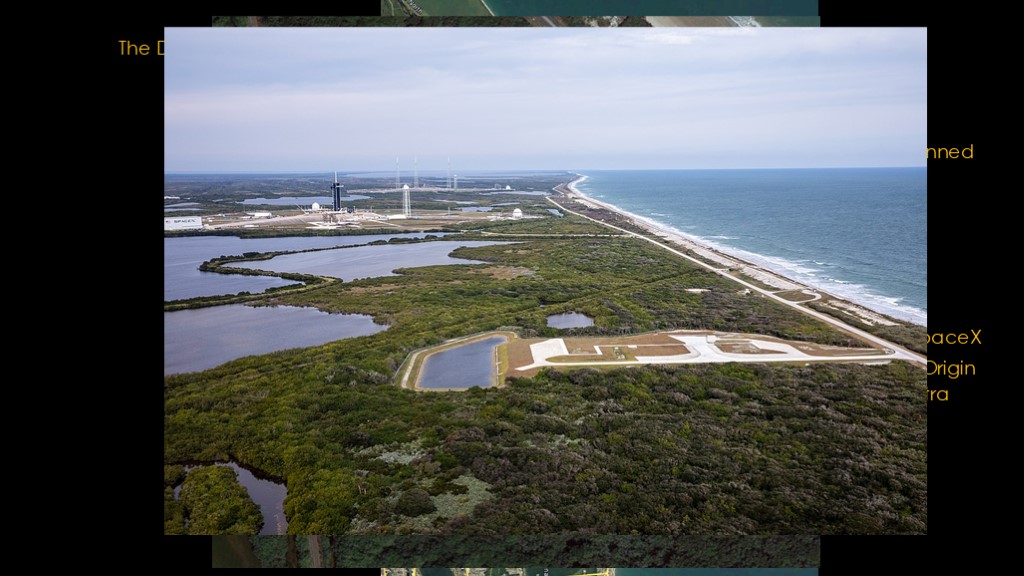
We have reached the northern boundary of Cape Canaveral Space Force Station and are now moving to Kennedy Space Center, so I'll add some landmarks.
The visitors center is just north of the factory locations for blue origin and firefly, the vertical assembly building - or VAB- is farther north, and the shuttle landing strip is in the northwest.
The first pad is launch complex 48, which isn't actually a working pad yet.
So far, it's just a location where small rockets could launch.
It's roughly halfway between space launch complex 41 and the big pads you can see in the background.
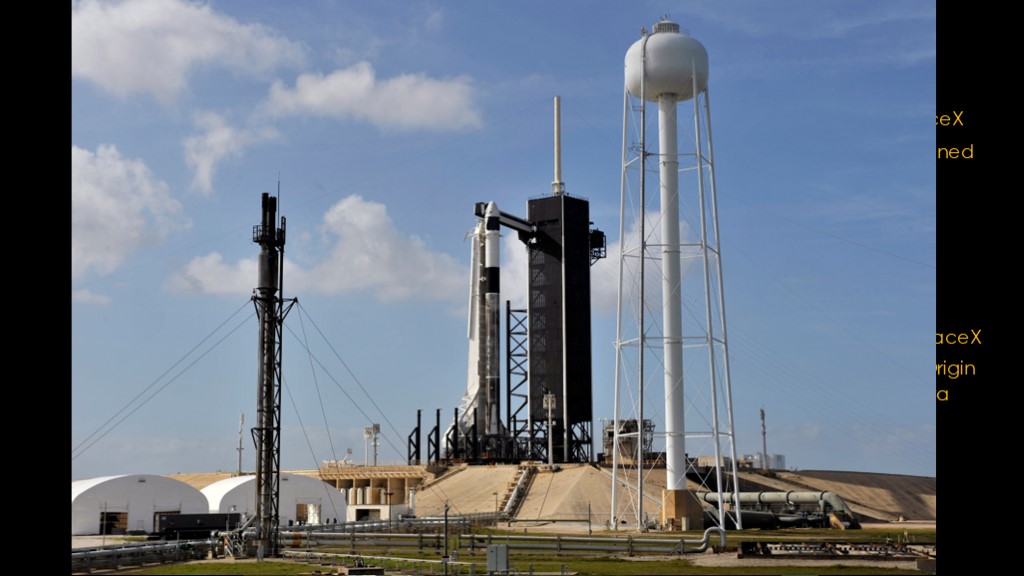
Launch complex 39A is the most storied of NASA's launch pads, hosting Apollo missions to the moon and many space shuttle launches.
It is currently leased by SpaceX and is used for Falcon 9 launches, Dragon crew launches, and Falcon Heavy launches. It is currently the only launch site for astronauts in the United States, though when Starliner launches crew in the near future, it will launch from nearby space launch complex 41.
SpaceX is currently building a launch support tower for Starship next to the Falcon 9 pad.
This picture shows a Crew Dragon on a Falcon 9 rocket. The large arm at the top is used for astronauts to enter the dragon capsule.
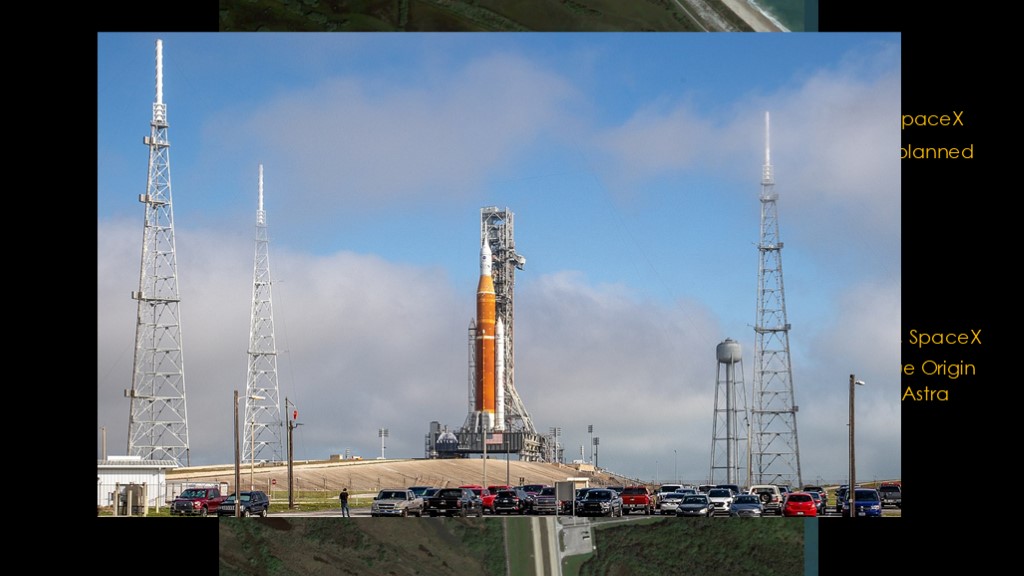
And finally, all the way at the north end, we have launch complex 39B, the neglected brother of launch complex 39A.
This pad launched Apollo 10 and the Skylab and Apollo Soyuz missions using Saturn IB rockets.
It launched 53 space shuttle launches.
The current design is a "clean pad" approach designed to support SLS and other commercial launches, but none of the big commercial launchers have been interested, so it's just SLS.
This image show the first SLS rocket and Orion capsule on pad 39B for wet dress rehearsal. This rocket will be used on the upcoming uncrewed Artemis 1 mission around the moon.
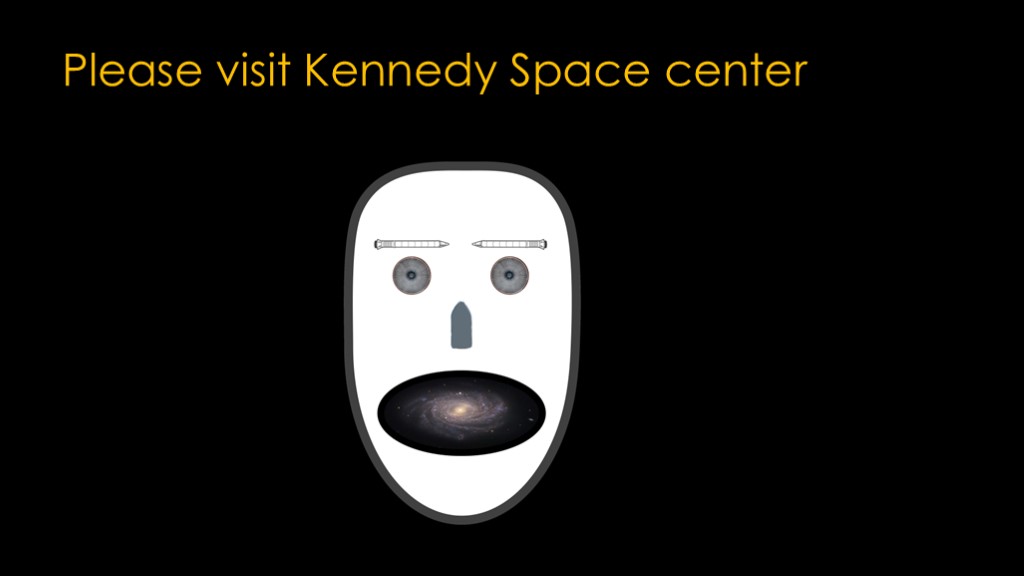
If you enjoyed this video and have the ability to do so, please visit Kennedy Space Center. I recommend the bus tours if they are running.
